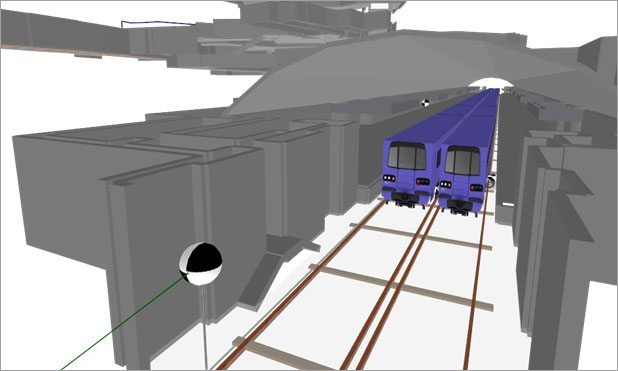iBwave certification is becoming table stakes for RF engineers and technicians who want to work on in-building networks. The software was first developed as a way to integrate the various tools used to design and manage distributed antenna systems. Now it has evolved into an industry standard for in-building networks.
“Being able to do the iBwave designs, being certified, is a must these days in the industry,” said CommScope’s Michael Shumate, VP of business operations at the DAS equipment and services company.
“We have found that most of our clients rely heavily on engineers with iBwave experience/certifications to serve as the true subject-matter experts,” said Blair Bode, VP of business development at telecom and IT recruiter Kineticom. “In our experience supporting DAS projects, we have found that most companies indeed require candidates with current iBwave certification(s).”
IBwave, the Canadian company that created the software, was recently acquired by Corning, which has said that iBwave will continue to operate independently and serve all vendors.
Integrating tools and processes
In the early days of DAS, engineers used spreadsheet programs like Excel, design tools like Visio, and other software as needed to budget, model and track an in-building project. iBWave integrates those functionalities with a 3D modeling tool as well as systems for overlaying the RF design and generating reports.
“The reason why operators are insisting that their suppliers are iBwave-certified is because then they have consistency in the language that is used and the tools that are used,” said Benoit Fleury, VP of products and innovation at iBwave. “So the operators are looking for their integrators to use iBwave, and the vendors are looking for their contractors to do that.”
Transit Wireless and SOLiD Technologies are relying on the iBwave software as they connect the New York City subway, station by station. Although the software cannot predict the trains, temperatures and rats that workers deal with daily, it can model the signals that will travel underground, and the spikes in traffic that will occur each time a train enters the station.
Using the iBwave platform means that a change to one part of a design is reflected throughout the project plan, and engineers do not need to manually update several different programs. Fleury said that iBwave also helps engineers accurately project costs and functionality because they are creating models using actual parts.
“We’re very close to all of the vendors and will model their equipment into the database, so when you create a design you are not just creating with generic parts; you are creating with actual parts from Cisco, Ericsson, etc.,” said Fleury. “Whether it’s a base station, small cell, antenna, cable, switcher, splitter, any bit and piece that makes up an in-building network.”
There are three levels of iBWave certification.
Level 1:
Level 1 prepares engineers and technicians to create picture plans, design and lay out plans, and generate reports. Individuals are ready to be certified at Level 1 if they have used iBwave Design Enterprise on a DAS deployment. Level 1 solidifies understanding of in-building wireless network projects, floor plans, site surveys and the fundamentals of testing. It also shows users how to generate bill of materials reports and key performance indicator reports.
Level 2:
Users who have Level 1 certification are ready to move on to Level 2 and work with advanced modules: collection, propagation and optimization. These modules are optional for vendors that have licensed the iBWave software.
Level 2 teaches users the fundamentals of in-building propagation models and helps them learn to make propagation predictions using iBwave. Users also learn to perform in-building radio testing using the collection module and to work with advanced AutoCAD and floor plan features to characterize building partitions. Another important part of Level 2 training is learning how to leverage information about outdoor coverage to plan indoor coverage.
“You can actually have an outdoor planning tool and you can integrate the data into the design, so you can optimize your in-building design and vice versa,” said Fleury.
Level 3:
The highest level of iBwave certification incorporates multiple input multiple output, stadium design, capacity planning and Wi-Fi offload. It is designed to prepare engineers and technicians to design systems that will provide coverage for tens of thousands of people simultaneously.
Engineers working on DAS that will provide connectivity in large and/or complex buildings may need Level 3 iBwave certification. Fleury said that when he sees spikes in Level 3 training in certain geographies, he knows major projects are in the works.
How to get trained
There are three ways to gain iBwave certification: classroom training, online classroom training and self-directed online training. The classroom training is offered worldwide, but trainees may have to wait several months if they want to enroll in a class in their city.
Each level of certification can be completed by attending all-day classes for three consecutive days. Users have roughly a month from the time of activation to complete online training.
Up next: small cells
iBwave has launched a one-day small cell training course, and Fleury said that when the time is right this will become a certification program. The small cell training does not require RF expertise, but some IT knowledge is useful.
iBwave realizes that as more deployments include both traditional DAS and discrete small cells, more technicians will need to be comfortable with both. Integrators will find that giving employees new skill sets is more efficient than sourcing new workers to perform new tasks.
“The idea is that when you do a site visit you try to do as much as you need to do so that you don’t have to come back,” said Fleury.
For more on Investing in Hetnets, watch the on-demand RCR Wireless News webinar and download the free feature report.


